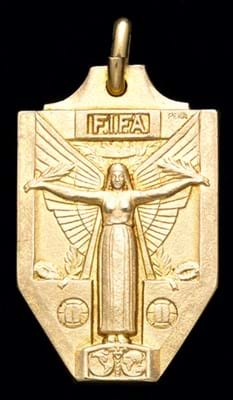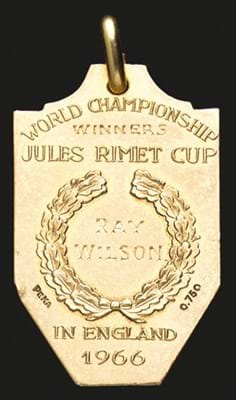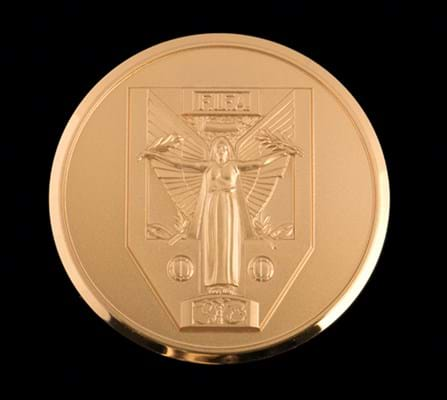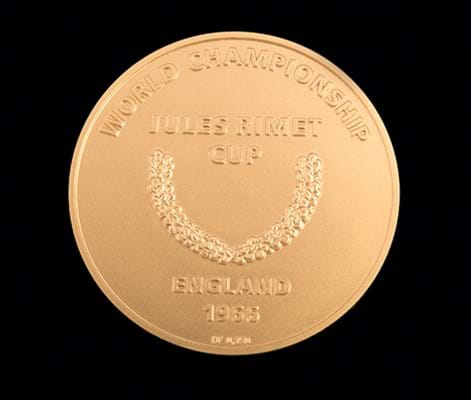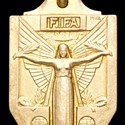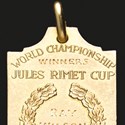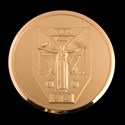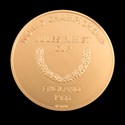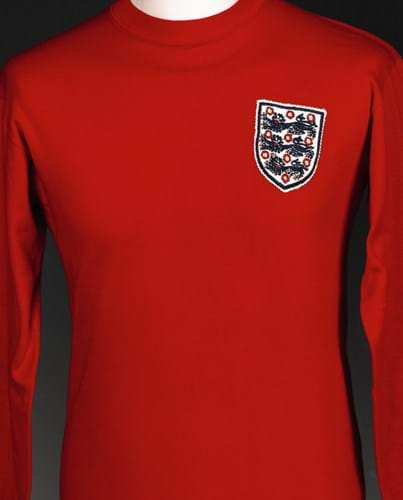
England’s sole triumph in the World Cup remains an integral part of the country’s sporting history and national consciousness. Naturally, therefore, the match at Wembley on July 30, 1966, also commands a unique place in terms of the memorabilia market.
Auctioneer Graham Budd who specialises in sporting memorabilia told ATG: “Items relating to the 1966 final always command extra attention. England has developed into world’s top football memorabilia market and the country’s sole World Cup victory has naturally great kudos for collectors.”
Rarity matters when it comes to memorabilia and England’s lack of success at tournaments since 1966 has arguably played some part in contributing to the exceptional values.
Beating Germany 4-2 after extra time (with the final moments immortalised by commentator Kenneth Wolstenholme delivering his famous lines: “They think it’s all over... it is now”), the 11 England players who played that day became legends in their own time.
But the fact that the players never earned particularly high salaries, and a number have experienced ill health or financial difficulty in the last 20 years (Bobby Moore and Alan Ball have sadly both died), has led to a steady stream of sales of their shirts and medals.
Price Growth
Inevitably, the growth in prices at the very top of the football memorabilia market means these items are now highly valuable and selling them has become a lucrative proposition. An indication of this is the £300,000-500,000 estimate for the No.10 football jersey worn by Geoff Hurst at a Sotheby's sale in London tomorrow (Tuesday).
The scorer of the famous hat-trick (who is still the only player to score three goals in a World Cup final), Hurst sold his collection of memorabilia at Christie’s back in September 2000. The shirt made £80,000 and was reportedly bought by football collector Gordon Mousinho.
Reappearing 16 years on, Sotheby’s said that it has changed hands at least once since the previous auction and that the seller is another private collector. If it sells, it will make an auction record for any football shirt as the reserve is well above the current saleroom high – the £140,000 set at Christie’s for Pelé’s 1970 World Cup final shirt sold in March 2002.
“It could certainly make a record,” Sotheby’s specialist Gabriel Heaton told ATG. “It’s an item that will appeal to the very top end of sporting memorabilia collectors but is also so iconic that it could easily gain interest from the wider market.”
When asked whether any current players might be tempted to bid, he replied that “people in the football world would clearly have the means to buy it”.
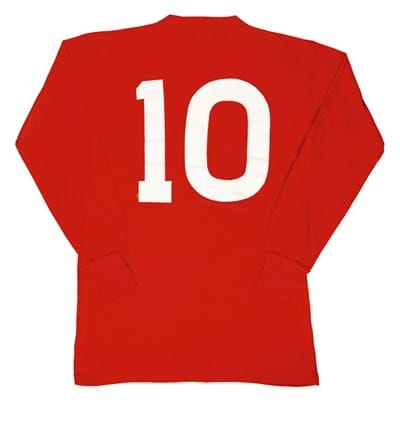
The red shirt worn by Geoffrey Hurst in the 1966 World Cup final which is estimated at £300,000-500,000 at Sotheby's. The No.10 on the back was stitched on by hand, as was the three lions on the front.
In terms of the interest in 1966 memorabilia, Heaton said: “The 1966 World Cup is clearly by far the most significant success in English football and is deeply embedded in our national psyche. For English collectors, items from the 1966 World Cup are in a different league to anything else.
“The football memorabilia market is mature in this country and high prices come for outstanding items. But exceptional pieces like this are few and far between and no shirt from 1966 has been on the market for a number of years.”
The last ‘66 shirt sold at auction was Nobby Stiles’ No. 4 jersey took £75,000 at Graham Budd in November 2010. Stiles had swapped his shirt after the match with team-mate Ball who subsequently sold it in 1978 and it was sold at the auction by a private collector.
1966 Medals
While Stiles’ shirt did not quite reach the heights of Hurst’s earlier sale in 2000, the midfielder’s winners medal did eclipse his teammate’s former record.
Hurst sold his medal for £150,000 to his former club West Ham in a private sale in 2001 but Stiles’ consigned his medal to Convery Auctions in October 2010 where it sold to his former club Manchester United for £160,000.
This remains the highest price for a 1966 World Cup winners medal at auction. It also exceeded the price of Ball's medal that made £140,000 at Christie's in May 2005 as well as the sum for the most recent medal on the market – Ray Wilson’s winners medal which made £136,000 at a Graham Budd auction in November 2014. The latter medal was bought by collector and chairman of Saracens RFC, Nigel Wray.
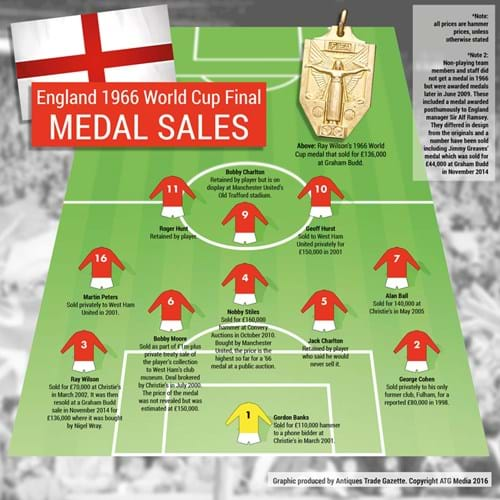
Where are they now? The England 1966 World Cup team and a summary of what happened to their winners’ medals.
The more recent auction results indicate that prices have increased since George Cohen became the first member of the squad to sell his medal in 1998. The right-back’s medal fell short of a £60,000 reserve price at Christie’s but was later sold to Cohen’s former club, Fulham, for a reported £80,000.
If another of the ‘66 medals were to be offered now, most specialists believe it could well take prices even higher, particularly if the medal belonged to any of the ex-Manchester United players. The 20-times title winners have a following in the memorabilia market that surpasses any other club.
Currently, only three of the 11 players remain in possession of their medals – Bobby Charlton, Jack Charlton and Roger Hunt.
Although there are no indications that any of them are ready to sell their medals any time soon, it’s likely that other ‘66 medals will crop up on the secondary market before long. The record price will inevitably be broken one day – something that seems likely to occur well before England ever win another tournament.


